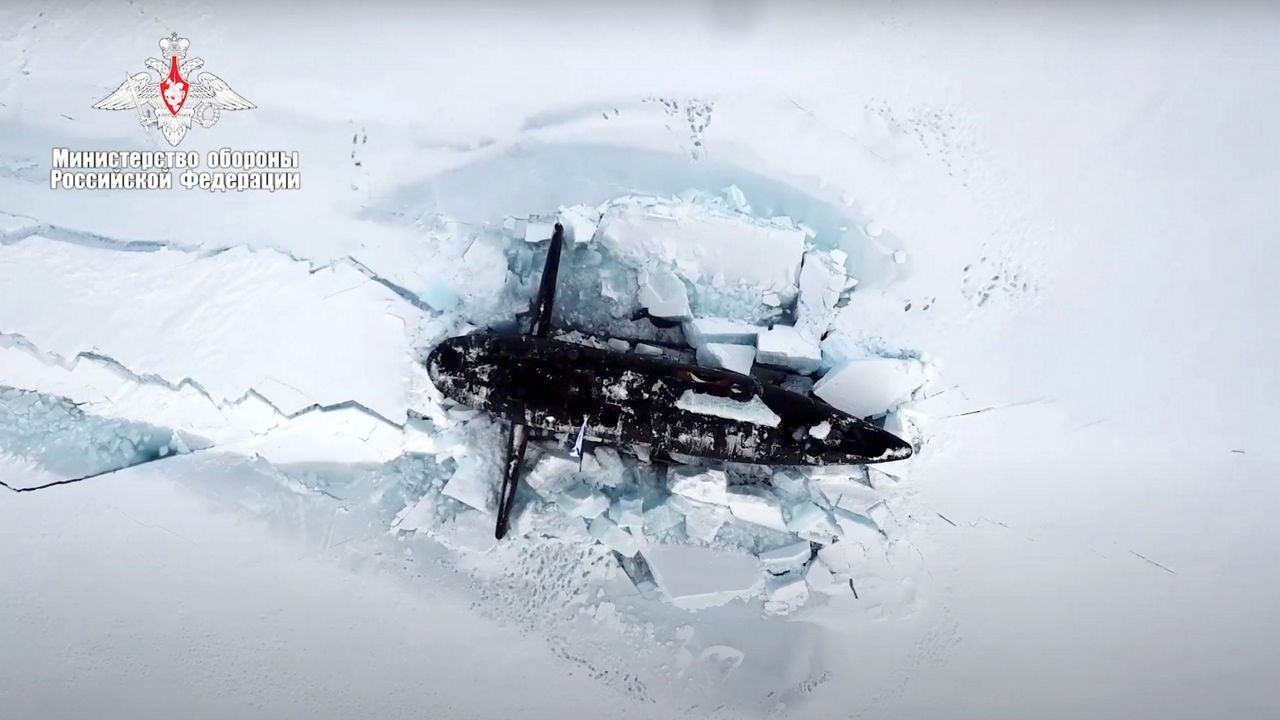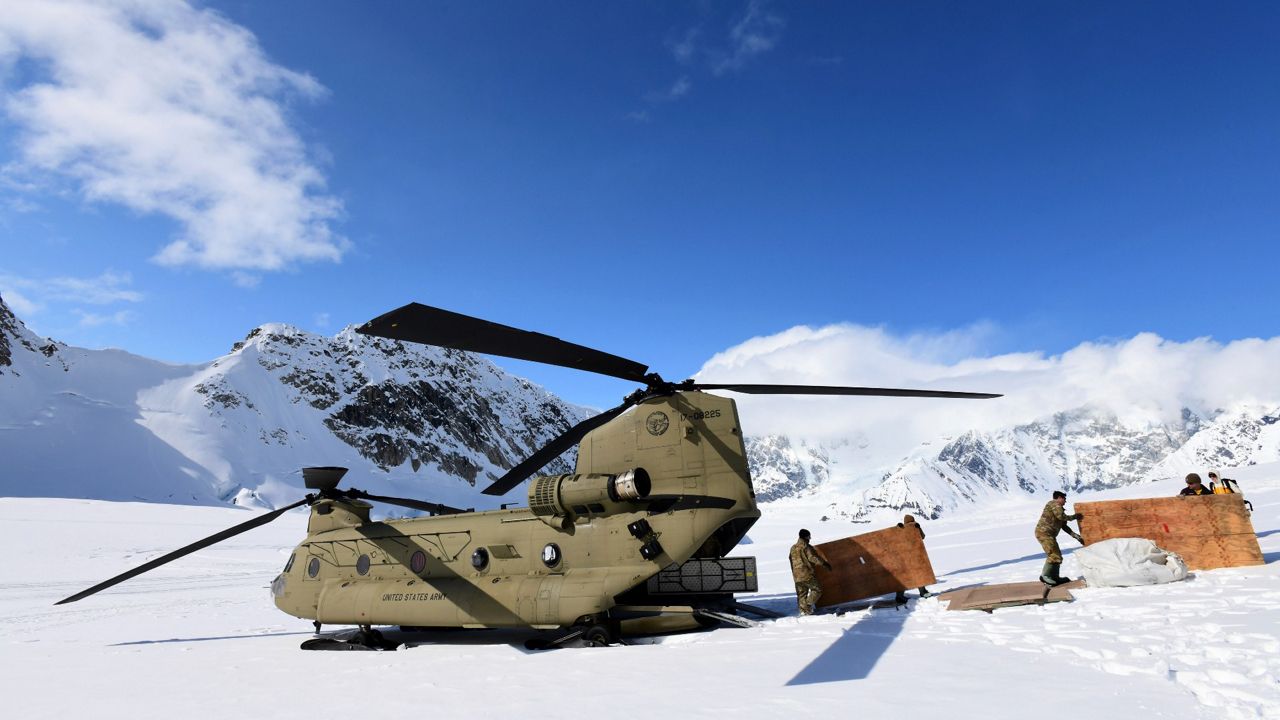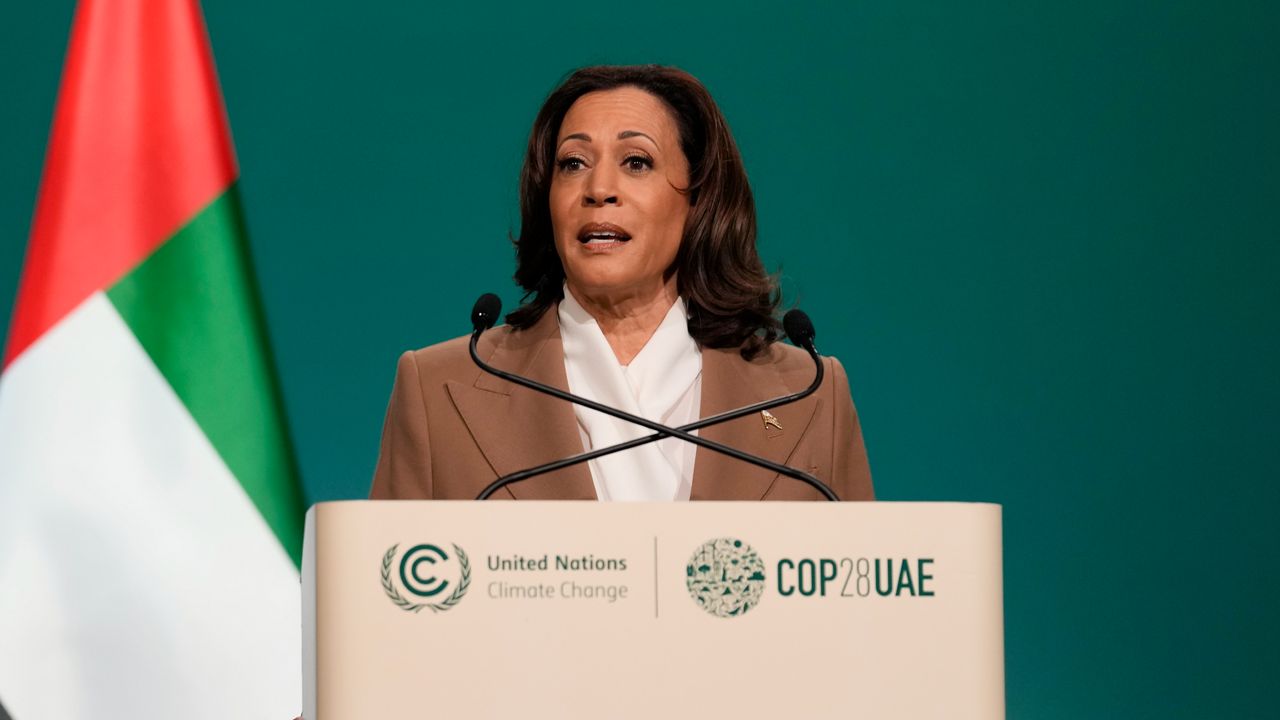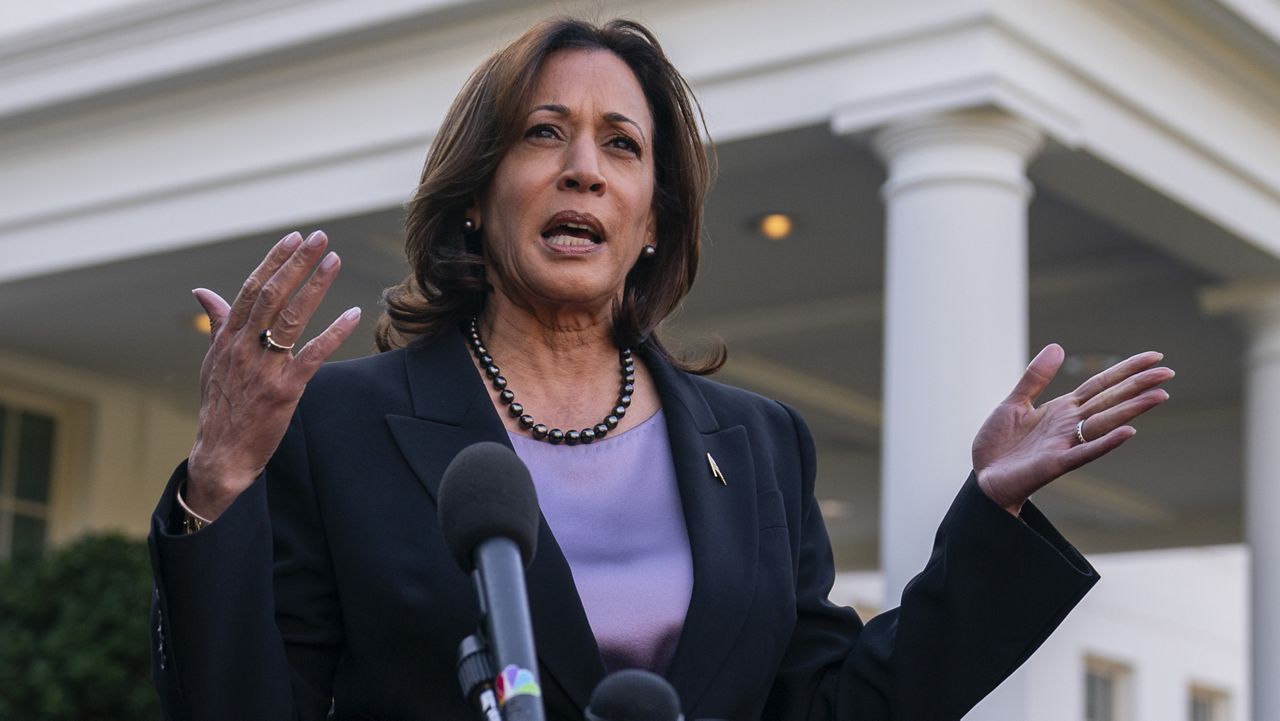As ice recedes and more of the Arctic becomes accessible — impacts of a warming planet — there are concerns that the region could someday become a battlefield.
What You Need To Know
- As ice recedes and more of the Arctic becomes accessible — impacts of a warming planet — there are concerns that the region could someday become a battlefield
- With trillions of dollars of resources available to extract, there are concerns about potential territorial disputes among nations
- While the eight nations that form the Arctic Council have largely enjoyed an amicable relationship on Arctic matters, Russia’s invasion of Ukraine has potentially created a fissure and alarmed observers
- The United States has stepped up its activity in the Arctic over the past two years
Temperatures in the Arctic are rising at three times the global rate. And below what once was an impenetrable frozen fortress is a treasure trove of oil, natural gas and minerals, including iron ore, copper, nickel, zinc phosphates and diamonds. With trillions of dollars of resources available to extract, there are concerns about potential territorial disputes among nations.
And it might be easy for much of the country to overlook, but the United States, thanks to Alaska, is an Arctic nation.
“It's a place where we need to defend against adversary action and we need to protect to prevent countries from accessing this region in a way that actually does environmental harm,” said Randy “Church” Kee, senior adviser for Arctic security affairs for the U.S. Defense Department.
While the eight nations that form the Arctic Council — the intergovernmental body that addresses issues related to the region — have largely enjoyed an amicable relationship on Arctic matters, Russia’s invasion of Ukraine has potentially created a fissure and alarmed observers.
Russia concerns
Brandon Boylan, director of Arctic and northern studies at the University of Alaska Fairbanks, said people who live in or study the Circumpolar North had been encouraged by the cooperation between the U.S. and Russia in the region despite the powers’ other differences.
“I think that conventional wisdom prevailed up until this year,” Boylan said. “And those of us who think about the Arctic a lot on an everyday basis are worried about U.S.-Russian relations, in general, including the Arctic.”
Even before launching its war with Ukraine in February, Russia had taken a more aggressive approach in the region than its other fellow Arctic Council members — the U.S., Canada, Denmark, Finland, Iceland, Norway and Sweden. In 2007, Russian explorers planted their national flag on the seabed below the North Pole. Moscow has made some of the most extensive territorial claims in the region and, according to NATO, reopened hundreds of Soviet-era military sites there.
While Russia has claimed its increased military posture is purely defensive, prompted by increased ship traffic to its north, “that all takes on a new meaning in light of the war” in Ukraine, Boylan said.

Kee, a retired Air Force major general responsible for establishing the Pentagon’s Ted Stevens Center for Arctic Security Studies in Alaska, said: “Just about every chunk of the Arctic Basin is up for some sort of territorial claim” of extended continental shelf under the United Nations Convention on the Law of the Sea.
The law says the default length of a country’s continental shelf — the edge of a continent that lies under the ocean — is 200 nautical miles from its coasts, but nations can make claims for up to 350 miles by proving a natural extension of the land mass.
Russia, meanwhile, has been accused of breaking international law by violating Ukraine’s sovereignty and territorial integrity.
“The Ukraine war breaks out in February and this changes the U.S.-Russian dynamic everywhere, also in the Arctic,” Boylan said.
The Arctic Council paused its operations in early March, citing Russia’s invasion of Ukraine. In June, the seven other Arctic states announced a “limited resumption of our work.”
Meanwhile, the Russia-Ukraine war prompted Finland and Sweden to apply for NATO membership. They are expected to be admitted to the alliance, which, if ratified, would leave Russia as the only non-NATO member in the Arctic Council.
“That, of course, changes the security dynamic — Russia,” Kee said. “Russia, of course, continues to feel threatened by the alliance.”
Kee added that while the Ukraine war has weakened the Russian military — to the point that Russian President Vladimir Putin is mobilizing hundreds of thousands of reservists — Moscow remains a concern because “they still have remarkably symmetric levers when it comes to nuclear power.”
Conflict chances ‘low’ but can’t be ignored
President Joe Biden has mentioned the potential for conflict in the Arctic in public remarks a handful of times since taking office.
Speaking at a Coast Guard change-of-command ceremony in June, he said: “The Arctic is going to change drastically and become … a place that is going to also generate potential conflict, in terms of dominating the Arctic as it melts.”
During a Coast Guard commencement speech in May 2021, Biden said: “We have to make sure that every country respects … international norms” in the Arctic and that the U.S. needs “to stand shoulder-to-shoulder with those allies and partners who share our values.” The president also made mention of protecting “this pristine environment” and securing it for future generations, conveying his desire for the U.S. and other nations to take environmentally responsible approaches to mining in the Arctic.
Kee said the probability for armed conflict in the Arctic Basin between the U.S. and an adversary is “very low.” But, he added, “the consequence of that, if that were happened, is quite profound.”
“Even the fact that it’s warming and barriers of access are lower, it's still a tough place to have to conduct military operations,” Kee said. “And at the end of the day, it is our business to try to put in deterrents that are really real, that are believable, that ultimately our adversaries will take stock and say, this is not the time to mess with the United States or our allies and partners. Today is not the day, tomorrow is not the day’”
China, a ‘near-Arctic’ nation
Russia isn’t the only adversary the United States is watching closely in the Arctic. While its borders do not extend into the Arctic, China considers itself a “near-Arctic state” and is an active observer of the Arctic Council.
Beijing, meanwhile, has been positioning itself to reap the economic benefits of new access to Arctic mineral resources, most notably by building infrastructure around a “Polar Silk Road,” a network of trade routes through the Arctic to help expedite global shipping.
“I think, in a lot of ways, China's policy towards the Arctic is very much in line with its global strategy,” Boylan said. “China sees economic opportunity everywhere, a pillar of its foreign policy. … China is deeply interested in investing in places all around the world and trading with all kinds of countries around the world, and the Arctic is no different.”
Church said China is playing a “longer game” in the region.
“They're looking at them leveraging their national power of economic influence and seeing that lower access barrier where they can actually have greater impact and greater access to Arctic governance and access to Arctic mineral and marine wealth,” he said.
U.S. stepping up Arctic activity
The United States, meanwhile, has stepped up its activity in the Arctic over the past two years.
For example, in March 2021, the U.S. Army released its Arctic strategy, which laid out how the Army will generate, train, organize and equip forces to partner with Arctic allies, secure national interests and maintain stability in the region.
As part of the strategy, the Army in June 2022 reactivated its 11th Airborne Division in Alaska. The unit will be “masters of their craft in Arctic warfighting and extreme cold weather and high altitude and terrain,” Army Chief of Staff Gen. James C. McConville, said during a ceremony at Fort Wainwright.
The Pentagon established the Ted Stevens Center in June 2021. One of its six regional centers for security studies, the center’s research and analysis focuses on ensuring Arctic security and connecting military and civilian stakeholders in the region.
“The Stevens Center is created to advance essentially the soft-power complement that the Department of Defense has made in hard-power investments across the Arctic region,” Kee said.
And in August of this year, the State Department announced it is establishing an ambassador-at-large for the Arctic region. The envoy “will advance U.S. policy in the Arctic, engage with counterparts in Arctic and non-Arctic nations as well as Indigenous groups, and work closely with domestic stakeholders,” a State Department news release said.
Biden has not yet nominated anyone for the role.
The United States is the only Arctic nation without a dedicated diplomat at the ambassador level or higher.
Boylan said he thinks the U.S. has been slow to pay attention to the Arctic, “but it’s been picking up the pace with its Arctic agenda a bit more lately, and the Ukraine war has definitely justified increased attention to the Arctic.”
Preventing conflict
Kee said a key to preventing conflict in the Arctic with Russia is to reestablish “norms and practices that prevent unnecessary escalation.”
He said there needs to be measures for deescalating tensions by providing assurances to the Kremlin that NATO and NORAD — the North American Aerospace Defense Command — pose no threat to Russia.
“We need them to recognize — we need a mechanism perhaps in place that reestablishes the sort of understanding and the fact that the mutual interest is to preserve peace throughout the Arctic Basin,” he said.
The Arctic Council, of course, can play a critical peacekeeping role, too. Boylan, however, said some experts, despite its statement about resuming its work on a limited basis, are concerned the council “is done now, in light of Ukraine.”
“I'm not so sure that's the case,” Boylan said. “But its future is definitely questionable.”
The Arctic Council said it was unable to answer questions from Spectrum News about its status, citing the pause. It referred questions to the individual member nations.
A State Department spokesperson told Spectrum News the U.S. remains "convinced of the enduring value of the Arctic Council for circumpolar cooperation and reiterate our support for this forum and its important work."
The spokesperson said there are more than 120 previously approved projects within the council and that the U.S. is continuing to work on those that do not require Russian participation, as well as part of the workplan approved by all eight foreign ministers in Iceland last year.








